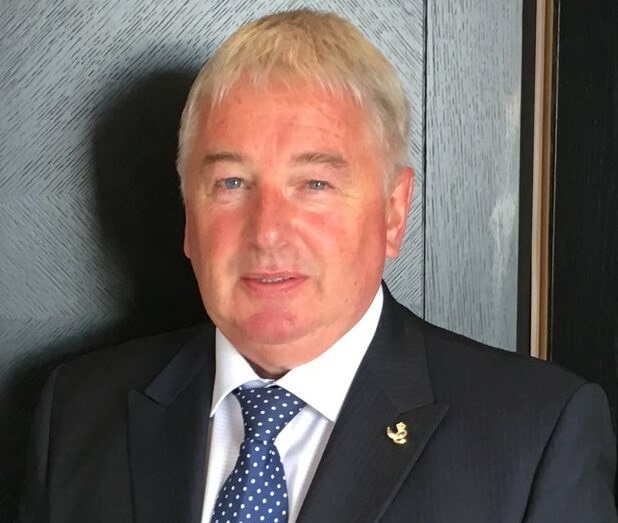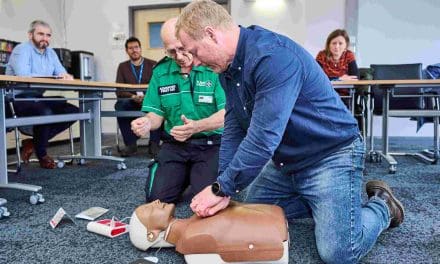By Andy Hirst
When holidaymakers go on Ryanair flights this summer they will hear a new safety message but may be puzzled over what it actually means.
After the familiar part about oxygen masks, ditching in the sea and how to use your lifejacket, you’ll now hear the crew warning passengers to alert crew immediately if their electronic devices such as iPads, mobile phones or laptops start to overheat or people lose them in their seats.
This is what Ryanair cabin crew now say just before take-off: “If your device or its battery is damaged, hot, produces smoke, is lost or falls into the seat structure then please inform the cabin crew immediately.”
Seems a strange warning which is also now being introduced by most other airlines so what does it actually mean?
Well, all personal electronic devices are powered by rechargeable lithium-ion batteries and with passengers taking mobile phones, laptops and iPads on board there are hundreds on every flight.
The trouble is many people buy cheap batteries and chargers on the internet not covered by safety standards so there is always the danger they can catch fire in a frighteningly quick process called thermal runaway.
This happens when one cell in a battery overheats it can produce enough heat – up to 900°C (1652°F) – to cause adjacent cells to overheat. This can cause a lithium battery fire to flare repeatedly and, because they burn at such a high temperature, they are very difficult to put out.
Lithium batteries are classed as dangerous goods and these kinds of fires can and do happen on aircraft as one Huddersfield company knows only too well.
Golcar-based Environmental Defence Systems Ltd is at the forefront of fire safety when it comes to dealing with the hazards caused by lithium-ion batteries on aircraft.
Its managing director, Richard Bailey, invented the AvSax lithium battery fire containment bag which is the world’s best-selling ‘burnbag’ for planes.

AvSax (http://avsax.com/) lithium battery fire containment bags are now on more than 15,373 aircraft operated by 80 airline companies worldwide. They have been used 33 times to deal with emergencies since the start of 2017 and every time they have been deployed the aircraft has been able to complete its journey safely with no need to divert or make an emergency landing.
The AvSax has made such a major difference to aircraft safety it was awarded the Queen’s Award for Enterprise for its innovation – the highest accolade any business in the UK can achieve.
Richard said: “Airlines across the world are very aware of the danger posed by lithium-ion batteries catching fire. After all, the last place you’d want any kind of fire is in the confined space of an aircraft passenger cabin.
“There have been far too many instances of airline passengers losing their mobile phones and other small electronic devices in their seats and when they have moved the seat mechanism they have then crushed the device, sparking a fire.
“This is why all airlines now have to be prepared as it can happen anytime and anywhere. There are also many cases of devices simply overheating and catching fire on board aircraft at 30,000ft.”
Richard also stressed that airlines insist people must take all their electronic devices into the passenger cabin with them and never put them in luggage in the hold.
The danger is that if a lithium battery caught fire in the hold it could quickly spread among combustible materials such as clothes and the automatic fire suppression systems would really struggle to douse a fire of such intensity.
Leeds-based Jet2.com has a very clear policy: “Equipment containing lithium batteries such as laptops, tablets and e-readers must be carried in the cabin.”
Ryanair’s policy states: “You cannot place electronic cigarettes or lithium-ion powered personal electronic devices such as iPads, tablets and mobile phones in your checked baggage.”
It means that on the rare cases when a lithium battery does overheat or start to burn on board an aircraft, the crew are on hand to deal with it immediately.
The AvSax is made from military grade material so can withstand the force of a blast if the device does explode.
The organisation covering flight safety in the UK, the Civil Aviation Authority, says a fire caused by a lithium battery could cause catastrophic damage to an aircraft and even bring it down.
It states: “Poor quality or counterfeit batteries have been the cause of fires on board aircraft. In recent years we’ve seen a growing number of fire incidents involving lithium batteries which have the potential to lead to the loss of an aircraft. All types of batteries must pass stringent tests. Batteries which are not tested such as counterfeit batteries pose a significant risk to flight safety.”
Each airline company has its own procedure for dealing with the danger but the one preferred by the CAA is to use specialist battery fire containment bags as they are designed to deal with the problem in seconds. The CAA warns that these so-called burn bags must be able to both cool and contain the device.
It adds: “After knocking down flames it could conceivably take just a couple of seconds for a PED to be placed inside a containment bag, allowing it to be moved to a place of safety.
“Passengers could then return to their seats, mitigating potential unrelated safety hazards such as injury in the case of severe turbulence. Equally, the effect on flight crew carrying out their duties following an event on the flight deck would be minimised.”
The reason why the lithium warning is more important than lifejackets is that lifejackets have hardly ever been used in commercial flying.
The only time it really happened was in 2009 when a US Airways flight made an emergency ditching on the Hudson River in New York after the plane hit a flock of large Canadian geese and lost all power after some were sucked into the engines, shutting them down. There were 150 people on board, only 33 grabbed their lifejackets and just four put them on properly.
* Written by ANDY HIRST who runs his own Yorkshire freelance journalism agency AH! PR (https://ah-pr.com/) specialising in press releases, blogging and copywriting. Copyright Andy Hirst.


















